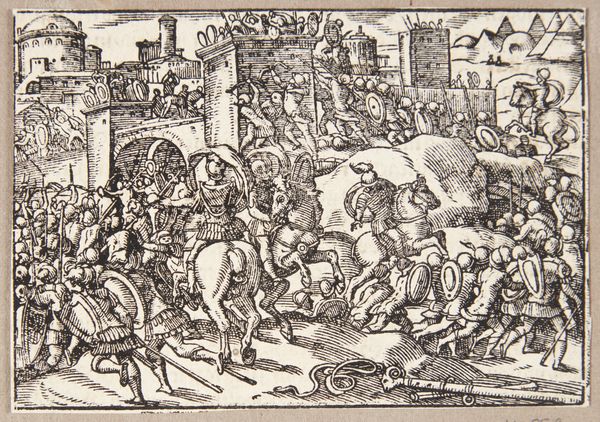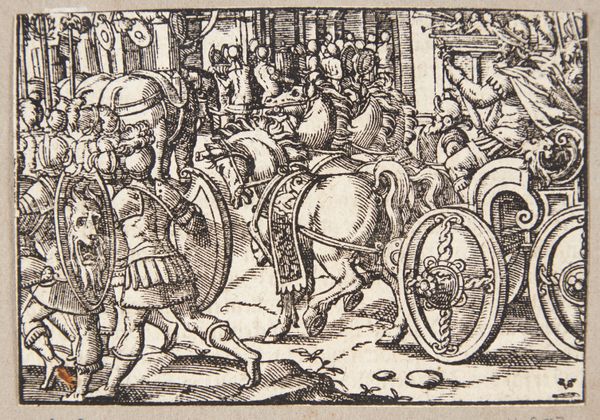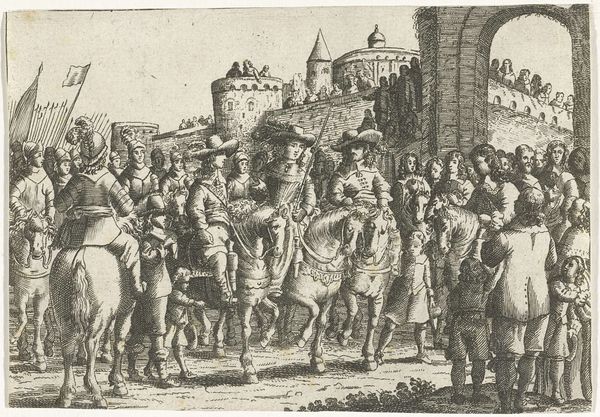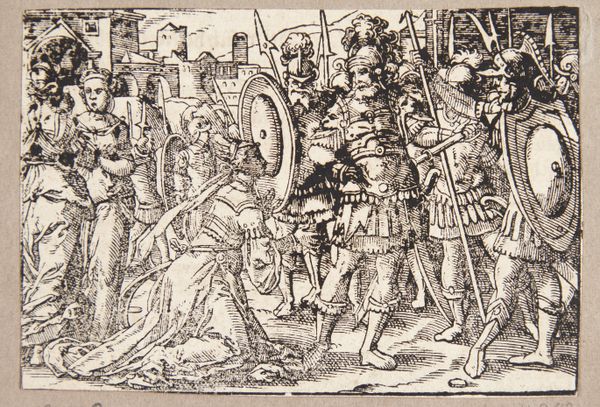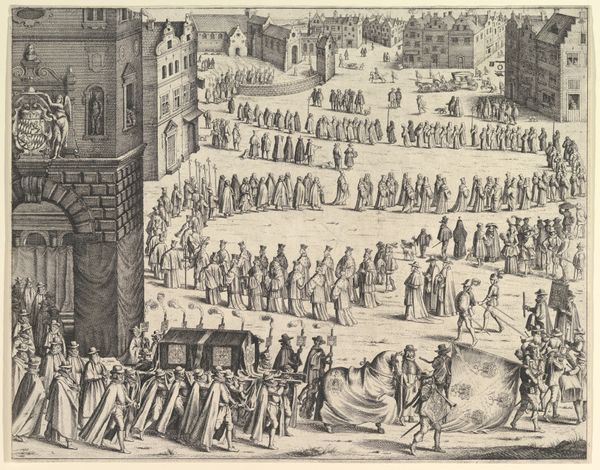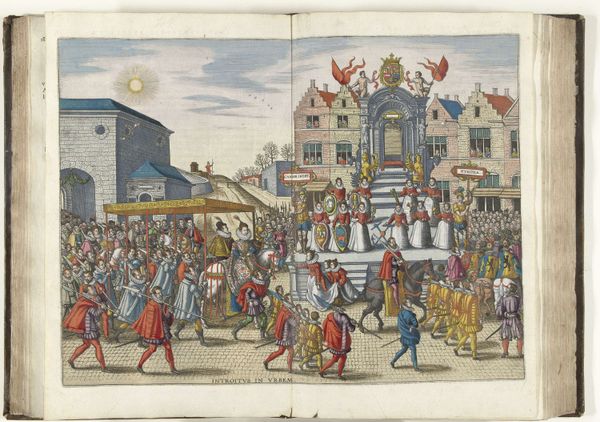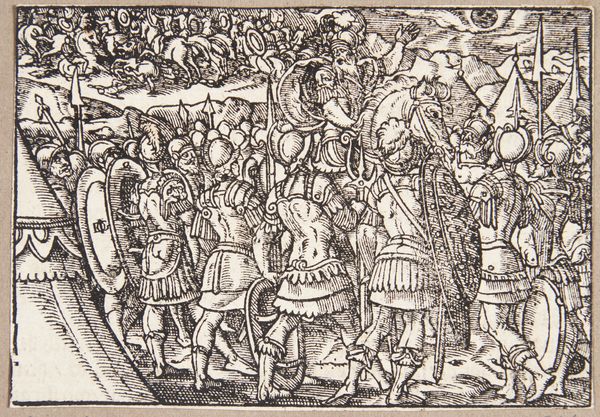
Arrival of the Emperor Charles IV in front of Saint Denis 1460
0:00
0:00
jeanfouquet
Bibliothèque nationale de France (BnF), Paris, France
tempera, painting
#
portrait
#
medieval
#
tempera
#
painting
#
landscape
#
figuration
#
genre-painting
#
history-painting
#
international-gothic
Copyright: Public domain
Editor: Here we have Jean Fouquet's tempera painting, "Arrival of the Emperor Charles IV in front of Saint Denis," created around 1460. The procession dominates the composition, and it evokes a sense of formal ceremony. How do you interpret this work in its historical context? Curator: This image offers a glimpse into the constructed nature of power and spectacle in the medieval period. It is crucial to consider Fouquet's portrayal of Charles IV not just as a historical record but as a carefully crafted narrative that served particular political and social functions. Think about the symbolism of the setting—Saint Denis, the royal abbey—and how it reinforces the divine right of kings. Editor: That makes sense. The staging definitely feels intentional, a bit like propaganda, almost. The artist shows the aristocracy looking down from the windows of their tall houses. Curator: Exactly! And beyond that, the work participates in the construction of ideas about race, class and gender at the time. Consider the racialized power dynamics embedded within these displays of authority. Fouquet's paintings invite us to think critically about how such imagery contributed to the normalization of inequality. Can we look beyond the pomp and consider who is not represented in the work? Whose stories are being erased? Editor: That is such an important point! By focusing on who is included, it's easy to overlook who is being excluded or marginalized in the artistic depiction of such events. Curator: Precisely. Examining it through that lens complicates our understanding, pushing us to see beyond the immediate grandeur and consider the larger systems at play. The lack of women other than onlookers is striking, given how royal events depended upon displays of female royal authority through costume and ceremonial performance. Editor: This reframing offers a far richer and honestly, more accurate, read of the painting than if we simply admire it at face value!
Comments
No comments
Be the first to comment and join the conversation on the ultimate creative platform.

